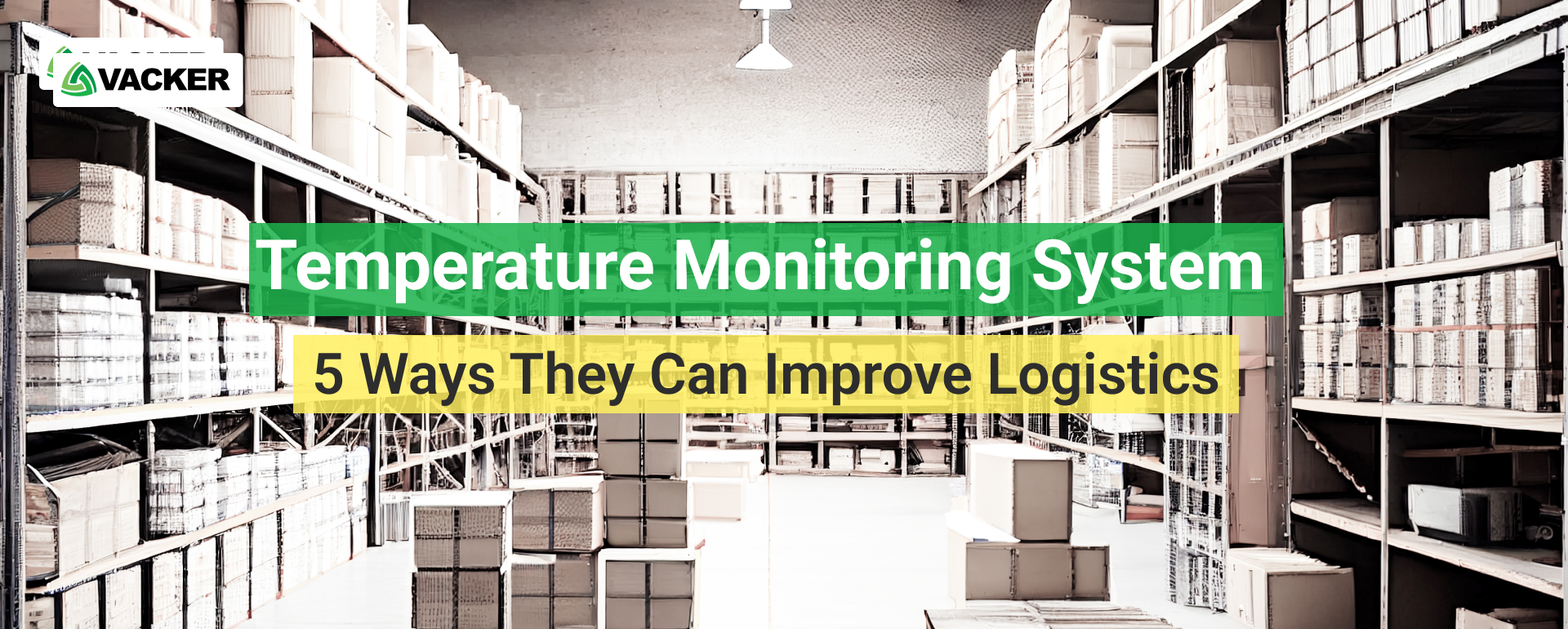Temperature Monitoring System – 5 Ways They Can Improve Logistics

Temperature monitoring systems play a vital role in ensuring that products are transported and stored at the correct temperature. This is especially important in the logistics industry, where perishable goods such as food, medicine, and chemicals must be kept at specific temperatures to maintain their quality and integrity.
A temperature monitoring system is a system that is used to measure, record, and analyze the temperature of a specific environment or product. These systems can be used in a variety of applications, including the storage and transportation of perishable goods, such as food and pharmaceuticals, as well as in industrial processes, such as manufacturing and HVAC systems. The temperature monitoring systems can come in different forms, it can be in a standalone device that you can place within the environment or area you want to monitor, which will record and store the data. Or it can be a part of an IoT solution where multiple sensors are connected and data is transmitted wirelessly to a central hub or the cloud for real-time monitoring and analysis. The following are the 5 ways that temperature monitoring systems can improve logistics.
-
Maintaining product integrity
The most obvious benefit of a temperature mapping system is that they help to maintain the integrity of products by ensuring they are stored and transported at the correct temperature. This is particularly important for perishable goods, such as food, which can spoil if not kept at the right temperature.
Temperature monitoring systems can help to prevent this by providing real-time data on the temperature of goods, allowing companies to take action if a temperature deviation is detected. This can help to ensure that products reach their destination in the best possible condition, which can help to reduce waste and increase customer satisfaction.
-
Compliance with regulations
Many industries have strict regulations governing the storage and transportation of goods at specific temperatures. For example, in the pharmaceutical industry, drugs must be stored and transported within a specific temperature range to ensure their safety and effectiveness.
Temperature monitoring systems can help logistics companies to comply with these regulations by providing accurate and reliable data on the temperature of goods. This can help to reduce the risk of penalties and fines for non-compliance and protect the company’s reputation.
-
Improved efficiency
Temperature mapping systems can also help to improve the efficiency of logistics operations. For example, real-time temperature data can be used to optimize supply chain routes and scheduling. This can help to reduce transit time and lower transportation costs, while also ensuring that goods are stored and transported at the correct temperature.
Temperature monitoring systems can also help logistics companies to identify and troubleshoot temperature-related issues more quickly, which can help to reduce downtime and improve overall operational efficiency.
-
Enhanced traceability
Temperature monitoring systems can also provide enhanced traceability for goods by providing detailed temperature data throughout the entire supply chain. This can help to identify any temperature deviations that may have occurred and determine the cause of any issues.
This can help logistics companies to identify potential problems and take steps to prevent them in the future. Enhanced traceability can also help to improve customer service by providing detailed information on the temperature history of goods.
-
Cost savings
Temperature monitoring systems can also help logistics companies to achieve cost savings in several ways. For example, by preventing product spoilage and reducing waste, companies can save on the cost of replacing spoiled goods.
Temperature monitoring systems can also help to reduce the cost of compliance by ensuring that goods are stored and transported at the correct temperature and helping to prevent penalties and fines for non-compliance. Additionally, temperature monitoring systems can help to improve operational efficiency, which can help to reduce transportation costs and increase revenue.
Temperature monitoring systems are a vital tool for logistics companies, helping them to ensure the integrity of products, comply with regulations, improve efficiency, enhance traceability, and achieve cost savings. You can find the procedure and guidelines on temperature mapping study and qualification here.
With the use of IoT technology in temperature monitoring systems, real-time data can be easily accessible by logistics companies and easy to integrate with other systems for better insights and decision-making. As the logistics industry continues to evolve and grow, temperature monitoring systems will become increasingly important for businesses looking to stay competitive and ensure the success of their operations. Contact us to know more.

Leave a Reply